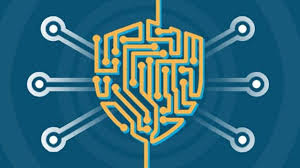The cybershield 365/24/7
Cyber security best practices for individuals and organizations
Cyber security is not just a concern for governments and large corporations; it is equally crucial for individuals and small organizations. In today’s digital age, where cyber threats are constantly evolving, implementing best practices is essential to protect sensitive information and maintain data integrity. This article will discuss some of the top cyber security best practices that individuals and organizations should follow.
1. Strong and Unique Passwords: One of the simplest yet most effective ways to enhance cyber security is by using strong and unique passwords. Avoid using common passwords or personal information that can be easily guessed. Consider using a password manager to generate and securely store complex passwords.
2. Two-Factor Authentication: Enable two-factor authentication (2FA) whenever possible. This adds an extra layer of security by requiring a second verification step, such as a code sent to your mobile device, in addition to your password.
3. Regular Software Updates: Keeping all software and operating systems up to date is crucial. Software updates often include patches for known vulnerabilities, which hackers can exploit. Set up automatic updates to ensure that you are always running the latest versions.
4. Secure Wi-Fi Networks: Protect your home or office Wi-Fi network with a strong and unique password. Additionally, consider enabling network encryption, such as WPA2, to secure the communication between devices and the network.
5. Employee Training and Awareness: Organizations should prioritize cyber security training and awareness programs for their employees. This helps ensure that everyone understands the importance of following security protocols and recognizes potential threats like phishing emails or suspicious links.
6. Regular Data Backups: Regularly backing up important data is crucial in case of a cyber attack or data loss. Store backups on separate devices or in the cloud, and test the restoration process periodically to ensure the data can be recovered.
7. Firewalls and Antivirus Software: Install and regularly update firewalls and antivirus software on all devices. These security tools provide an additional layer of protection against malware, viruses, and other cyber threats.
8. Secure Web Browsing: Be cautious when browsing the internet. Avoid clicking on suspicious links or downloading files from untrusted sources. Use reputable web browsers and consider using browser extensions that provide additional security features.
By implementing these cyber security best practices, individuals and organizations can significantly reduce the risk of falling victim to cyber attacks and protect sensitive information from unauthorized access. Stay vigilant, stay informed, and stay secure!
The cost of cyber attacks and the value of investing in cyber security
In today’s digital age, the cost of cyber attacks is staggering. The value of investing in cyber security cannot be overstated. Cyber attacks not only lead to significant financial losses for businesses, but also result in reputational damage, legal consequences, and potential customer distrust. It is crucial for organizations to understand the true extent of the impact cyber attacks can have on their bottom line.
The financial cost of cyber attacks is multifaceted. The direct expenses include incident response, recovery, and potential ransom payments. However, the long-term financial repercussions often extend far beyond these immediate costs. Companies may suffer from lost revenue due to downtime, loss of intellectual property, or the need to invest in new security measures to prevent future attacks. Additionally, there are legal expenses and fines that can result from non-compliance with data protection regulations.
Furthermore, the intangible costs of cyber attacks are equally significant. A breach of customer data can lead to a loss of trust and loyalty, impacting customer retention and acquisition. The damage to reputation may result in decreased brand value and a loss of competitive advantage. Rebuilding trust and repairing a damaged reputation can be a time-consuming and expensive process.
Investing in cyber security is essential to mitigate the risks posed by cyber attacks. By implementing robust security measures and proactive monitoring, organizations can greatly reduce the likelihood and impact of successful attacks. The investment in cyber security is not just a cost, but rather an investment in the longevity and resilience of the business.
Cyber security measures include securing networks, implementing strong access controls, regularly updating and patching software, educating employees about security best practices, and conducting regular security audits. By staying ahead of evolving threats and investing in the right technology and expertise, organizations can enhance their ability to detect, respond to, and recover from cyber attacks.
In conclusion, the cost of cyber attacks is not limited to immediate financial losses. The long-term consequences, including reputational damage and legal ramifications, can be equally devastating. Investing in cyber security is not only a smart financial decision, but also a critical step in safeguarding the future of any organization. By understanding the true cost of cyber attacks and the value of investing in cyber security, businesses can make informed decisions to protect themselves and their stakeholders.






.jpg)

No comments:
Post a Comment